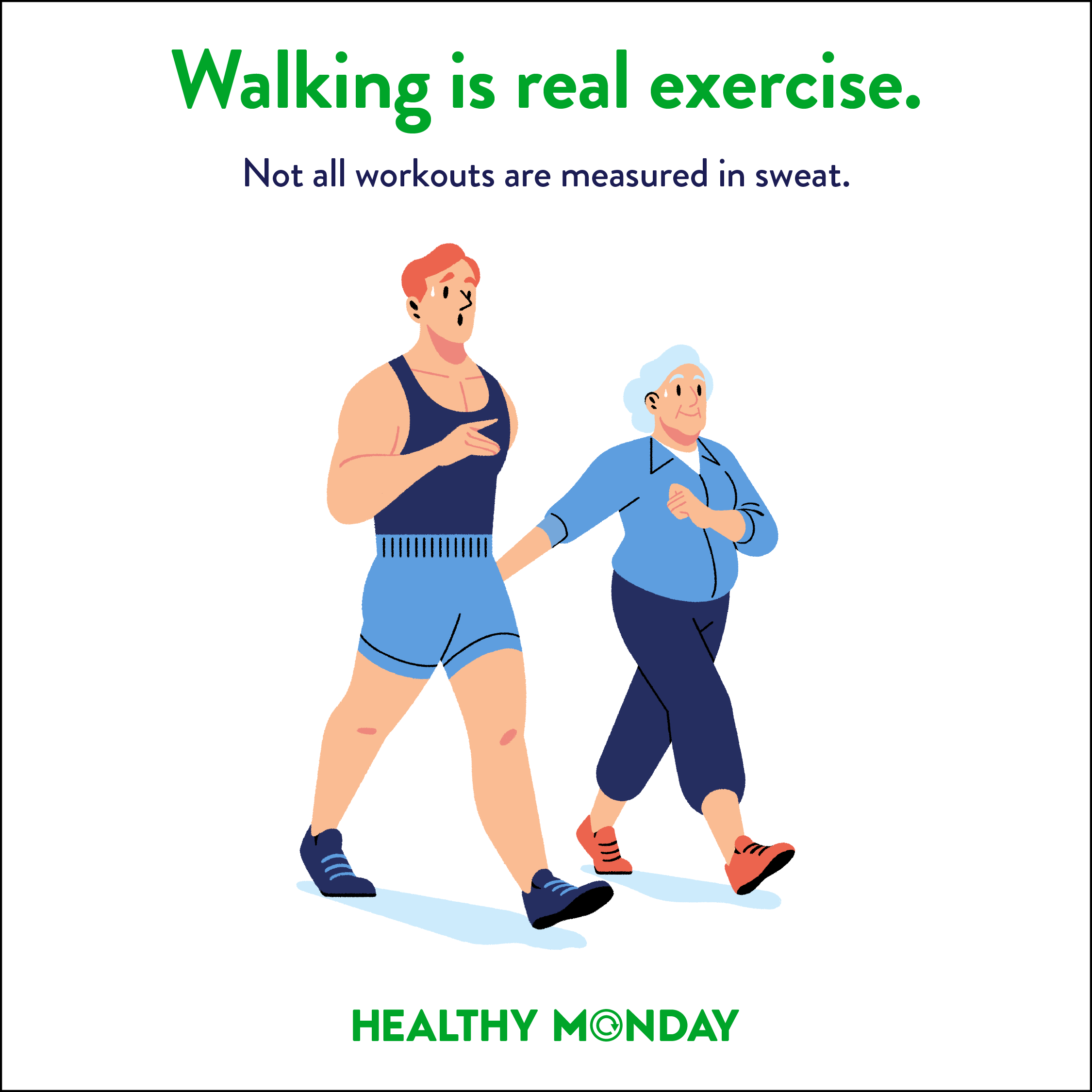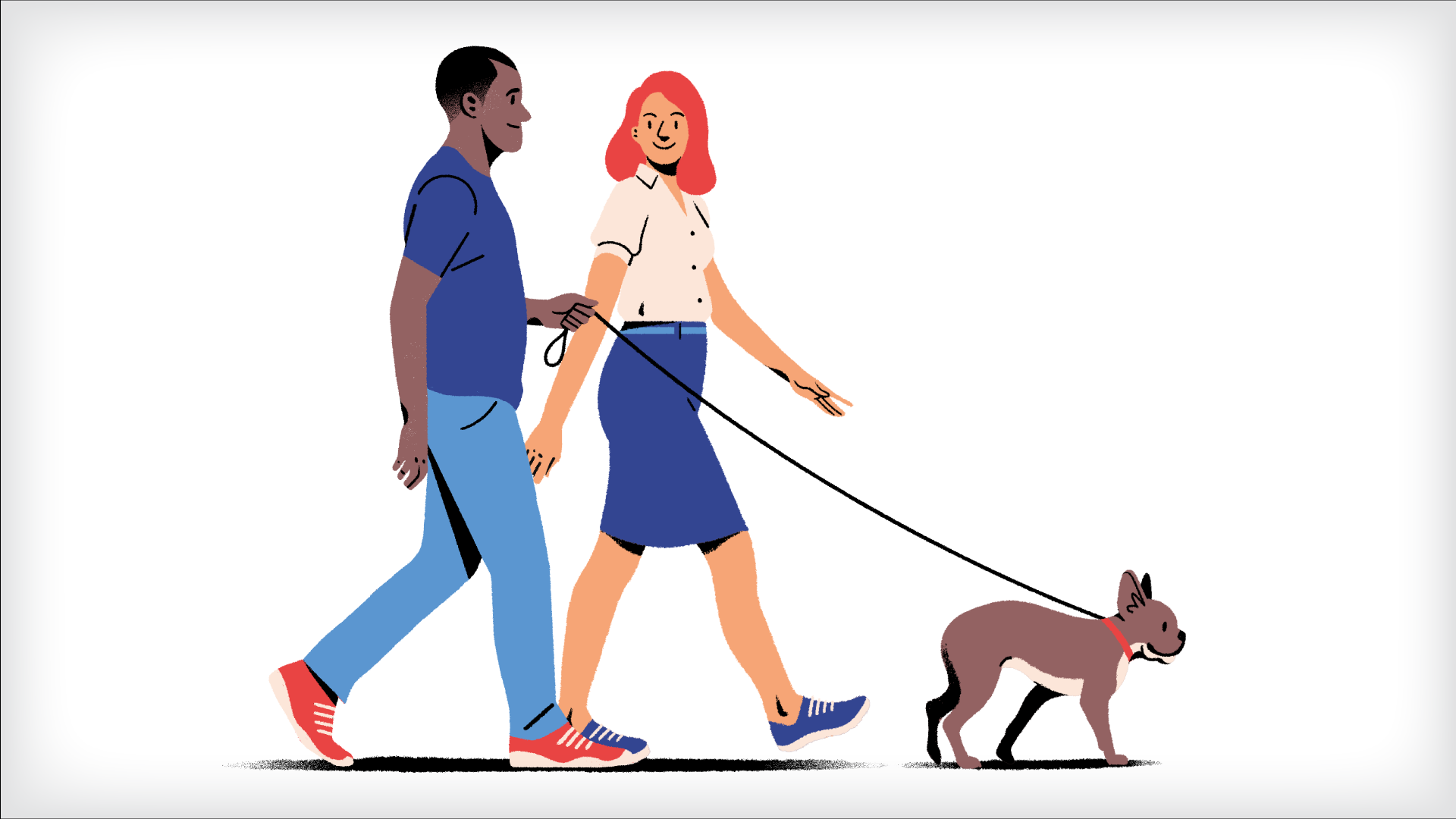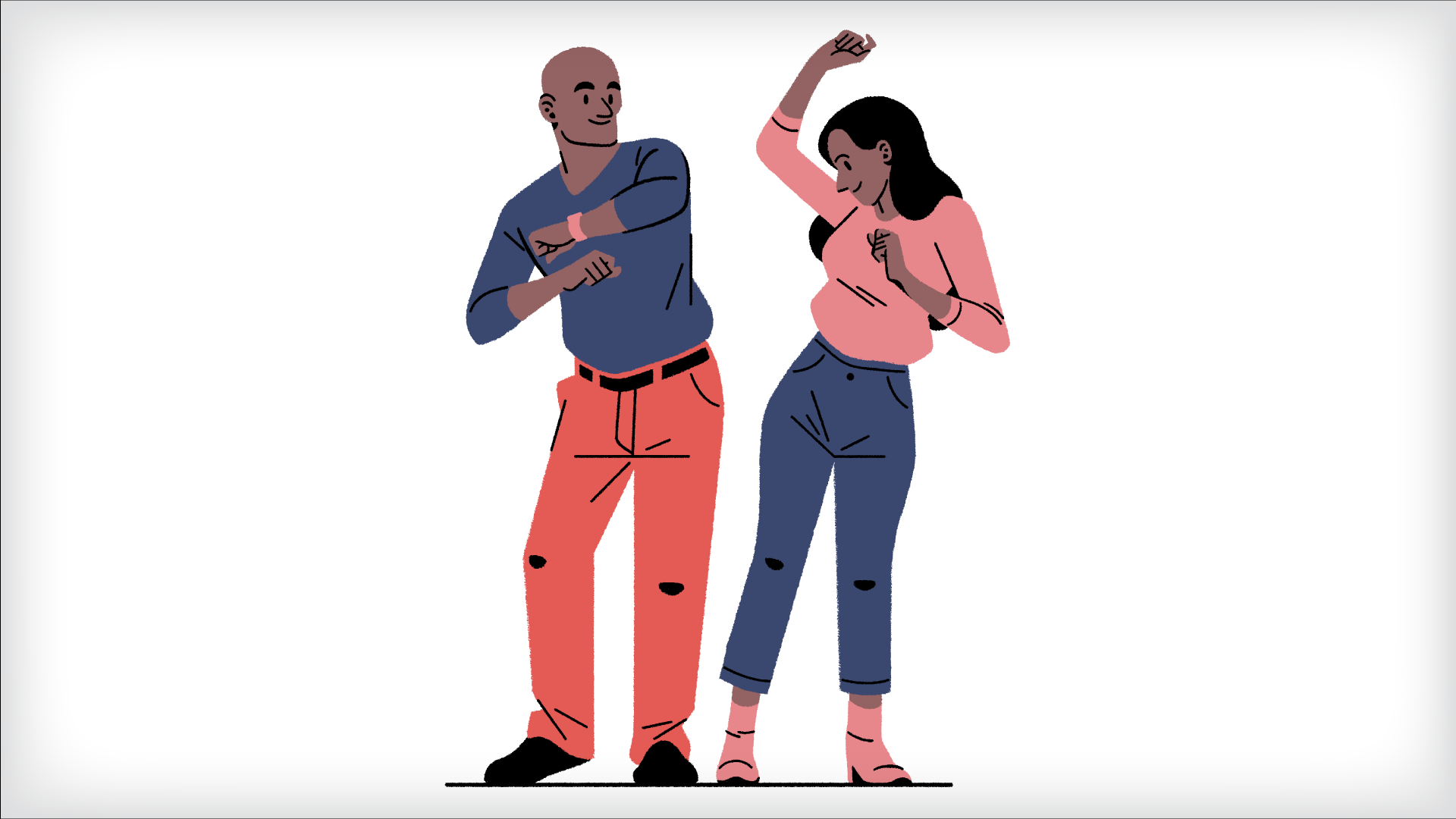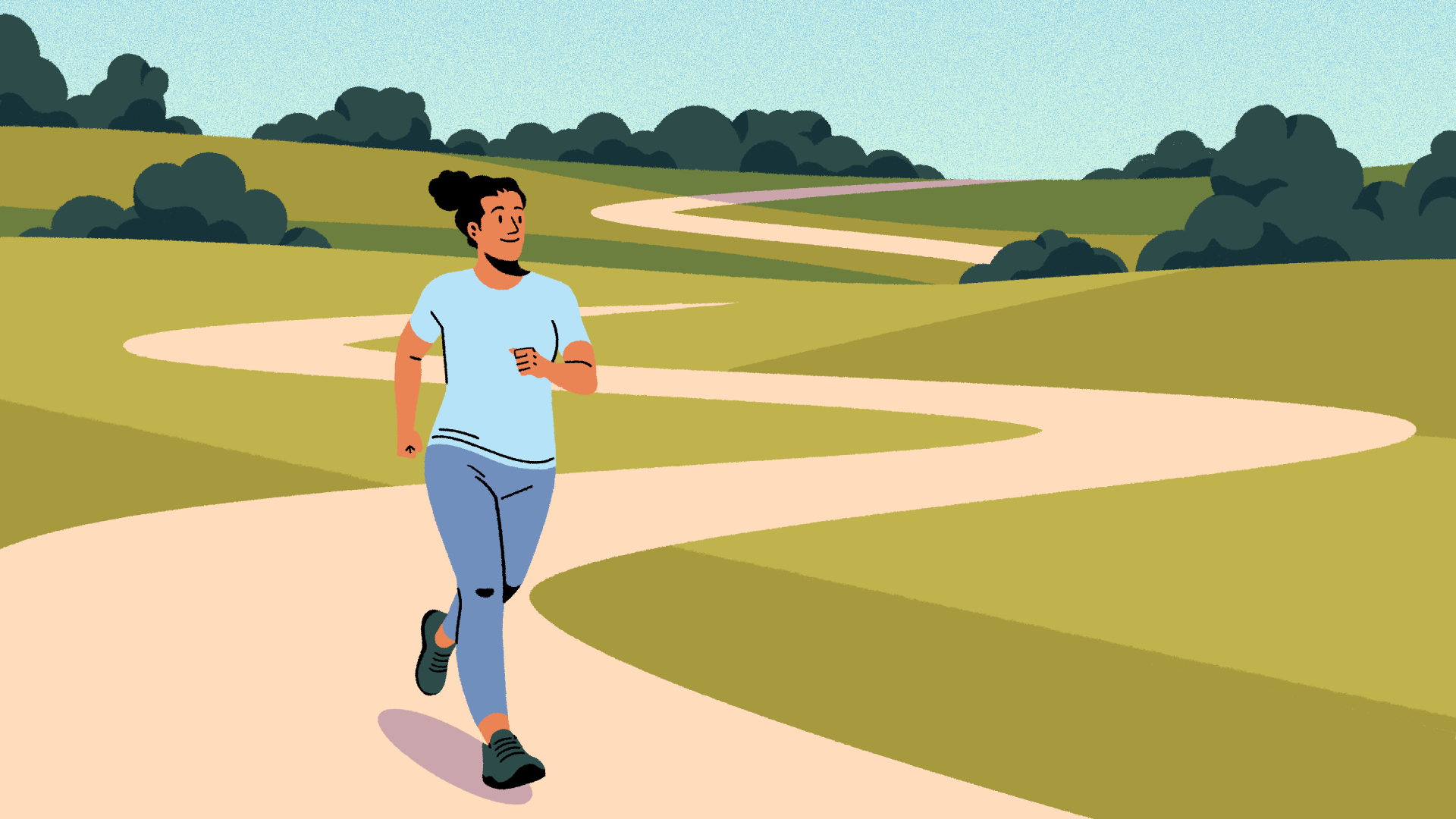Walking Is Real Exercise
Walking is real exercise; the startling health benefits prove it!
Don’t let that hard-core runner convince you otherwise: Walking is real exercise. A 2013 study found that walkers who cover the same mileage as runners enjoy comparable improvements in a variety of health markers. One reason is because walking works the same muscles as running, only the intensity and duration are different. Sure, it’ll take you twice as long (or more) to cover the same distance as your runner friend, but walking is easier, more accessible, and may be the best exercise to start off with, especially if you’re a beginner.
Here are your talking points for why walking is real exercise:
Keeps your weight in check. According to a 2009 study, people who walk to work are less likely to rattle that obese marker. To burn enough calories to lose weight, the Mayo Clinic suggests putting on your sneakers and walking 30 minutes a day.
Helps regulate blood sugar. Walking combats Type 2 diabetes because it helps lower blood sugar levels, thus reducing insulin levels. But timing is everything. Walking for 15 minutes after every meal regulates blood sugar levels just as effectively as one 45-minute walk per day.
Promotes better digestion. What’s the antidote to lying down after a big meal (one of the worse things you can do for acid reflux and a host of other conditions)? Walk! The activity super-charges your digestion by moving the food faster through your body.
Prevents varicose veins. Walking helps to drain excess fluid from the lower legs and can help prevent varicose veins through the pumping action of the calf muscles. That increase in oxygen you’re feeling also gets rid of waste products in the tissues.
Lowers blood pressure and cholesterol. Walking briskly can lower your risk of high blood pressure as well as high cholesterol just as much as running can, according to findings reported by the American Heart Association. In fact, the more walkers walked, the better their health improved.
Gentle on the joints. Doctors say gentle walking is the best exercise if you’re pregnant, morbidly obese, or suffering from arthritis. Walking may even help ease the pain of chronic illness. For those experiencing these conditions, experts suggest starting with just two to five minutes a day, then adding an extra two minutes every third day.
Mood lifter. Walking just makes you feel good! That’s because moving your body releases endorphins that dull pain receptors in the brain, sedate you, and can even make you feel happy, if not euphoric. A 2005 study found that walking briskly for 35 minutes five times a week, or 60 minutes three times a week, could significantly impact mild to moderate depression symptoms.
Better night’s rest. Tossing and turning all night? Take this insider’s tip from travel experts, who suggest walking around a new city on the day you arrive until it’s dark can help recalibrate your supply of melatonin. Essentially, the hormone is needed to synchronize your body clock to your new time zone; the more melatonin in your body, the sleepier you’ll feel at the right time.
How to walk right? Experts say that to ensure walking is real exercise and not just a friendly stroll you must walk fast enough to cover about 4 miles an hour. That will feel like hurrying to a bus or trying to get out of the rain; the point is to feel slightly winded. If you’re a beginner, see that goal as an aspiration and slowly work up to it.



